As an Amazon Associate, I earn from qualifying purchases. Additionally, I earn a commission through each purchase made on Amazon, Clickbank, zZounds, Plugin Boutique, Plugin Fox, Thomann, Jam Play, and Punkademic from one of my links.
Truthfully, Garageband’s ‘Musical Typing’ feature is enough to start producing music right away and it’ll work just fine for the first couple of months.
However, assuming you’re now ready to move to the next stage, here is a list of my favorite gear that will keep you busy and inspire you to make as much music as possible.
To get started as a music producer, I would purchase a 1) MIDI Keyboard, 2) an Audio Interface, 3) a microphone, and 4) studio headphones.
I want to add that everything on this list is what I either own or have personally tried. I can guarantee their quality, otherwise, I wouldn’t recommend it.
With that said, not everything on this list is necessarily the “best,” they’re just pieces of equipment that I can assure is well worth the purchase.
1) The Acorn Masterkey-49
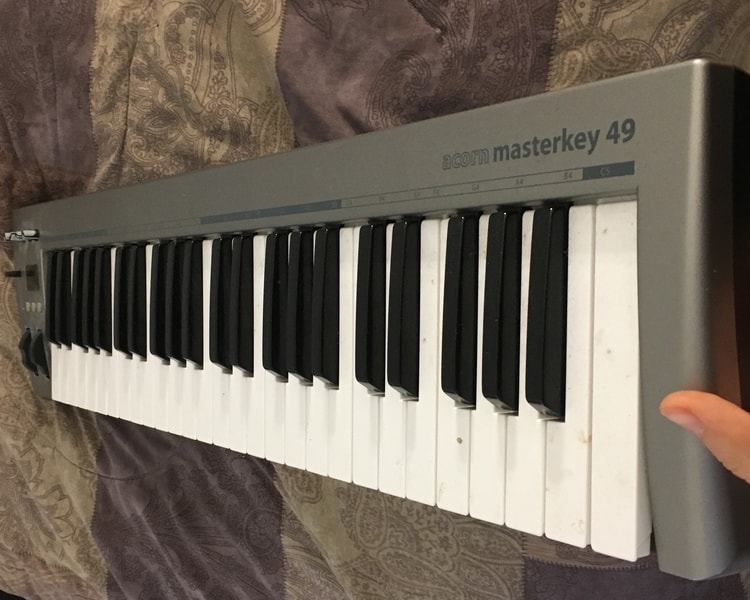
I would recommend the Acorn Masterkey-49 to start, due to the fact it’s inexpensive and it has 49 keys, rather than just 25.
If you’re anything like me, you want the range and versatility that comes with having a much bigger keyboard. A 25-key is too small for me. I find it creatively inhibiting.
The Acorn Masterkey can be used for nearly all software and it comes with pretty solid key sensitivity, as well as other handy additional features like volume control.
It’s PC and Mac capable, comes with a 6-foot USB cable, four pots, and then modulation and pitch wheels.
All-in-all, I would argue that this is probably the best MIDI-keyboard to start with because of its price and the fact it won’t limit your creativity at all.
(You can check the price out here on Amazon).
2) Audio Technica ATH-M30x Headphones
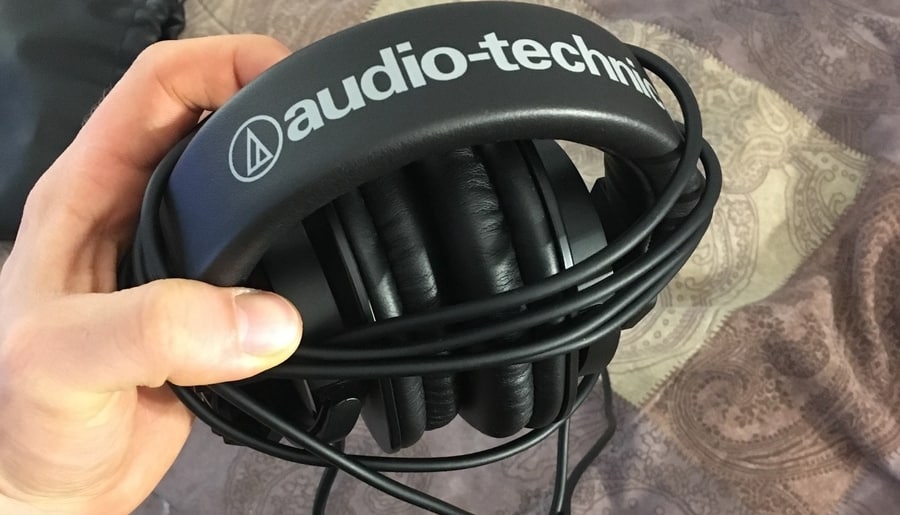
The next thing you want to grab is some decent studio headphones. When I first started out, I had no idea why this was important, but it really is. Having a good pair of headphones is essential if you want music that sounds balanced and ‘professional.’
Most speakers and headphones are created specifically for the casual listener, so they’re typically made with boosted frequencies, most commonly the low-end, because most consumers want more bass.
For instance, if you’ve just mixed a track using Beats from Dre, you’ll more than likely end up with a mix that has not enough low-end in it, because the low frequencies on casual listening headphones are turned up much higher, and are therefore an “unbalanced” headset.
It sounds like audio engineering gobbledygook, but it’s the truth, a decent pair of studio headphones will ensure that your mix sounds the greatest in multiple speaker systems, whether they’re iPod headphones, a Google Home speaker, or in a car.
In other words, it offers a more authentic and genuine perspective of what the music really sounds like. While, technically, there is no such thing as neutral monitors or headphones, studio headphones do their absolute best to be that way.
For that reason, they’re essential.
3) Focusrite Scarlett 2i2

I use the Focusrite 6USB, which I believe, although I could be mistaken, is no longer in production. However, I’ve used the Focusrite Scarlett 2i2 and I know it’s just as good.
The one area where I have a lot of praise for Focusrite is that it seems as though much of their products are made of steel and they seem to last for a long time. My audio interface, in particular, has lasted 10 years.
It’s still as good as the day that I bought it, and I couldn’t be happier with it. The Focusrite 2i2 comes with Ableton Live Lite, Focusrite Red plug-ins suite, 2GB of samples, and one free virtual instrument.
I wouldn’t recommend getting the solo to start (one input), because if you ever want to play guitar and record vocals at the same time or have two microphones set up so you and a friend can start a podcast, you won’t be able to do that with optimal quality due to their only being one input.
4) iRig HD 2 (Optional and For Guitar Players)
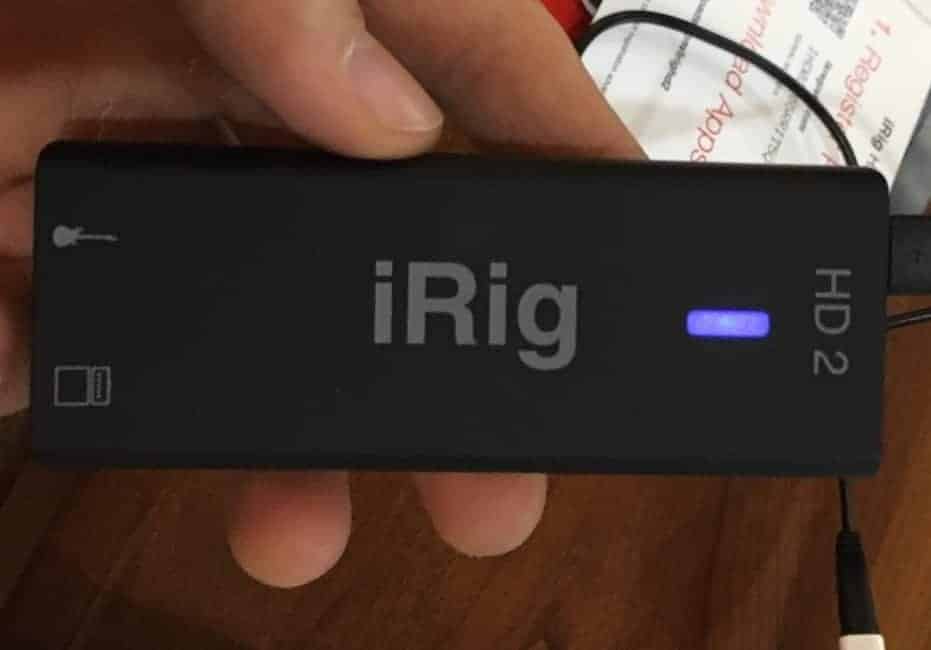
I primarily use an audio interface to record guitar parts, so for that reason, the iRig HD 2 has almost replaced the Focusrite interface.
When I start recording vocals sometime in the future, I imagine I’ll start to use the Focusrite once again, but for now, this little compact piece of equipment is perfect.
You may ask why have two interfaces? As I mentioned above, the Scarlett 2i2 has two inputs for mics so you can use it for more than one thing at a time.
For instance, if you wanted to start a podcast with yourself and a friend. The iRig HD 2 only performs as an audio interface for one instrument at a time.
It’s extremely light-weight and it comes with a demo version (I believe) of Amplitube and a few other plug-ins. I don’t really use the plug-ins it came with, because it’s good enough on its own.
However, just an important thing to note, when you first plug it into your computer, it’s not a bad idea to have it already plugged into your computer before you boot up Garageband.
I’m not sure why this is the case, but it’s what I had to do in order for my computer to recognize the interface at first. Since then, it hasn’t mattered what’s turned on first, it only mattered the first time I plugged it in.
Another brief criticism is that it’s made out of plastic.
Other than the two aforementioned things, it’s a great product and I use it every day.
(You can check the price out here on Amazon)
5) Shure SM58
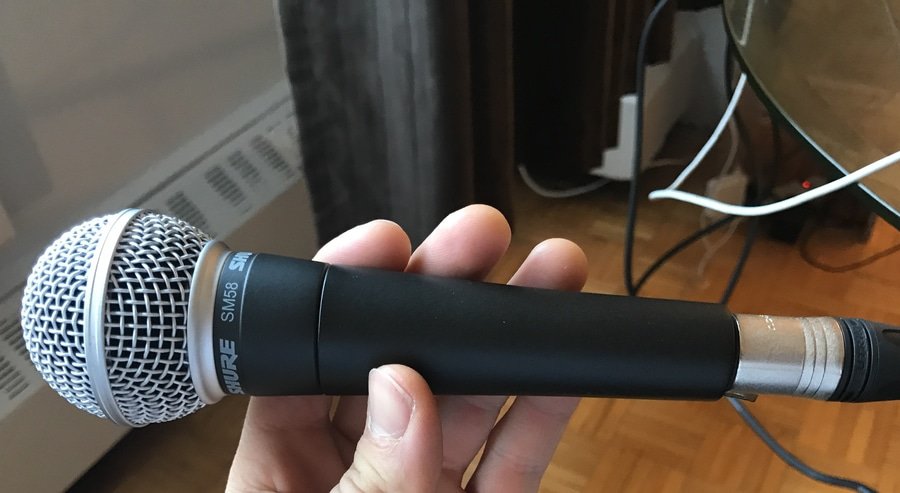
This is a classic dynamic microphone that’s pretty much a standard piece of equipment in studios everywhere. If you were to google the “best microphones to purchase,” this would likely be the first one to turn up.
I don’t have one anymore, but if I needed to go out and purchase a microphone once again, this is the one I would get. Moreover, if you ever take a look at performers on stage, there’s a good chance they’ll be using this microphone.
There are three main kinds of microphones, dynamic, condenser, and ribbon, and I would start out with a dynamic mic such as this one because they’re a bit more versatile and more apt for beginners.
(You can check out the price here on Amazon).
Other Items
Before we continue on to the next set of products, know that the following are not really essential, they’re just other pieces of gear that aren’t a bad idea to have. I can personally vouch for each one.
It wouldn’t hurt to get yourself a USB to USB-C adaptor. This is mostly for people who have the newest version of the MacBook computers.
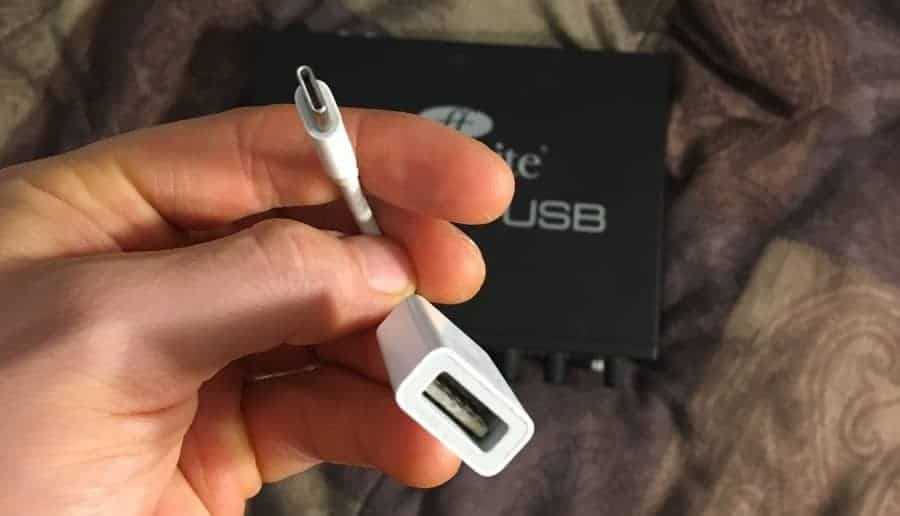
(Check out the price here on Amazon).
The older ones don’t need it, but the newer models do since they changed the ports into USB-C ports that do everything.
I would also recommend a right-angled guitar jack, which is optional, considering it’s only for guitar players.
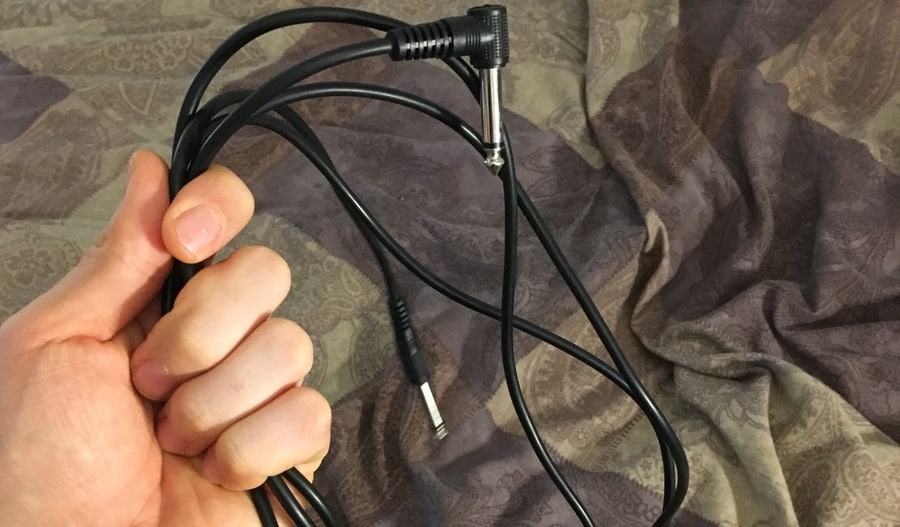
It’s my favorite kind of cable, because it’s more versatile, in the sense that it allows me to sit on my bed, on a stool, or on my computer chair, and I don’t have to worry about the guitar jack poking into whatever I’m sitting on.
Guitars
1) ESP LTD EC-1000VB

This is the main guitar that I use. It’s mostly built for metal, but I use it for pretty much everything now because I appreciate the build, the finish, the way it looks, as well as the active pick-ups.
It comes with LTD locking tuners, two volume knobs, one for each pick-up, as well as a tone knob.
It also has active EMG pick-ups, an EMG 81 in the neck and an EMG 60 in the bridge.
(You can check out the price here on Amazon)
2) PRS SE 24 Custom
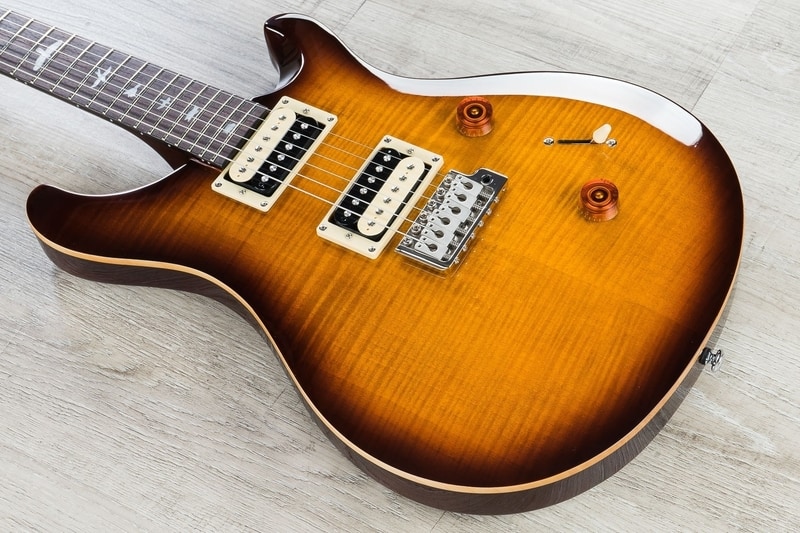
Now, this guitar is a bit cheaper than the LTD, but it’s more versatile than the LTD. Paul Reed Smith is slowly becoming one of the greatest guitar brands that are both extremely nice and affordable.
For years, Gibson was the leader in guitar manufacturing, but due to a host of issues, they’re kind of kicked themselves out of that position, with Fender having some problems as well, albeit not as bad.
The PRS SE Custom 24 has 24 frets and a whammy-bar tremolo system, and it’s an all-around beautifully sounding guitar with a solid finish and look to it.
I would argue that the PRS SE Custom 24 is more of a “bang for your buck”-guitar due to its price and versatility. The ESP/LTD is more for a specialized guitar player – those who are primarily into hard rock and metal.
The PRS SE Custom 24 really shines when playing jazz and blues in my opinion.
(Check out the PRS SE Custom 24 on Amazon)
Final Notes
An audio interface, a MIDI keyboard, a microphone, and a pair of monitors/headphones are the best things to buy when you’re first getting into music production.
As a beginner, I would just dip your toes into the world of gear, because there is a ton of awesome – and expensive – stuff out there, and you don’t want to get stuck with pricey stuff that you don’t even need.
It’s best to just take your time and slowly figure out what you like and how to use things properly before going on to dropping the big bucks.
That’s all for now. Thanks for checking in. And as usual, do me a solid and share this on social media.

 Written By :
Written By :